Drombeg Stone Circle is an ancient circle of standing stones found in County Cork.
When you think of stone circles, the mammoth monument at Stonehenge in England probably springs to mind. But did you know Ireland is home to many stone circles too?
Today, I'm taking you on a photographic tour and a ramble around one such stone circle found near Glandore in County Cork. Drombeg is well worth a visit. But I know many readers may never make it there, so today sit back, and let me bring Drombeg to you.
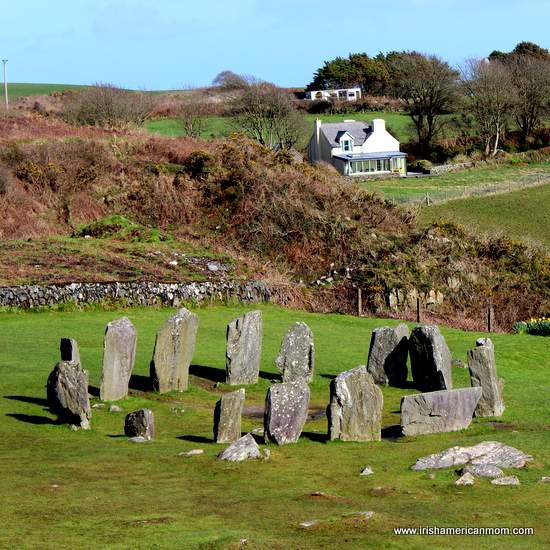
Table of Contents
A Little Fact and Fiction About Drombeg Stone Circle
Be fair warned. If you have come in search of historical facts alone, this is not the post for you. Here we're touring Ireland in true Irish American Mom style. Not just facts found here, but a little bit of fiction and fantasy thrown in for good measure.
But first let's start with a clearly evident fact. This ancient stone memorial beautifully compliments the gorgeous surrounding landscapes.
That is, if it stops raining long enough for the mists to clear, so that you might even set eyes on the amazing countryside.
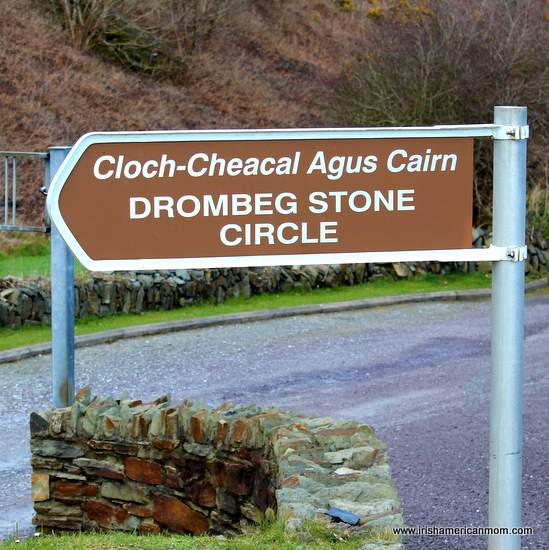
Drombeg's name literally means little ridge. "Drom" is the Irish word for a ridge and "beag" means small.
On the spring day when I visited this impressive little ridge, the clouds parted, and the sun shone, in between showers of pelting hail.
Anyone who has ever experienced Ireland's temperamental spring weather will know exactly what I mean.

Ireland's stone circles are made up of less impressive stones than found in the mega structures of Britain. Boasting much smaller inner circles, nonetheless they are remarkable remnants of Ireland's ancient past.
Drombeg compliments rather than dominates the beautiful landscape, and is one of the most visited megalithic sites in all of Ireland. Most experts concur this stone circle pre-dates Christianity by centuries.
How Many Stones Must Be In A Stone Circle?
Five is the minimum number of stones required to make a ring, that can officially be called a stone circle.
And fair dues to the Corkmen and women of old - they hauled seventeen huge boulders to their sacred site to make an impressive stone circle.
Unfortunately only fifteen of the original seventeen stones survived, and two of the stones seen today are replacements. (Check out the Voices from the Dawn website for detailed information).
More Complicated Mathematics Than Counting To Seventeen
And here's the piece of the puzzle from Ireland's megalithic period that always amazes me. Our ancestors figured out the exact positions required for their stones so that they would align with the rays of the setting sun on the shortest day of the year.
How they did it, nobody knows. But one thing is for sure - they were no fools when it came to doing their sums.

Here are a few of the astronomical facts about Drombeg, making it a typical example of the stone circles found dotted around Cork and Kerry. The monument is oriented in the direction of sunset on the midwinter solstice.
The midpoint of the focal recumbent stone is set in line with a notch in the faraway hills, where the sun sets on the shortest day of the year.

You can see the notch in the hills just above the rectangular stone to the rear of this photo.
Our ancestors captured the rising sun in the east of the country at Newgrange on December 21st, and then focused on the setting sun on the west coast in County Cork.
Now the alighnment of Newgrange is perfect and when the weather cooperates the inner chamber of this ancient tomb lights up magnificently on the shortest day of the year. At Drombeg apparently the alignment is not as precise, but as we like to say in Cork, it's good enough.
All of those Leinster geniuses did their mathemathics perfectly. Now in Munster we were good at the maths too, but why get all caught up with perfection.
Theories About The Purpose of Drombeg Stone Circle
What exactly was the purpose of stone circles? The truth is we merely have theories and conjectures, some based upon archaelogical findings, and some based on old legends.
In the middle of the 17th century Drombeg came to be called "The Druid's Altar." The large recumbent stone is darker than the other stones in the circle, and legend indicates it might have been a sacrificial altar. It lies directly opposite two stones, which could mark a ceremonial entrance portal.
In 1958 Drombeg stone circle was excavated by the archaeologist E.M. Fahy. He found bits of cremated human bone in the center of the circle together with pottery shards.
This has led to many theories of blood thirsty druids making sacrificial offerings at the site.
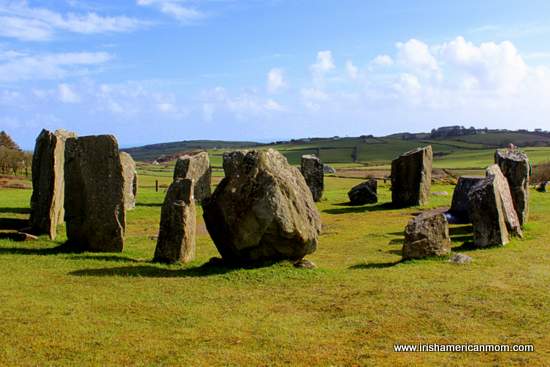
But none of these theories can be proven to be fact. Perhaps this stone circle has less ominous significance and simply marks the burial ground for an important family of Ancient Ireland.
Most farmers in Ireland are very respectful of these ancient sites. Even when situated right in the middle of a field, they work around ancient stones rather than disturbing them. Nobody wants to annoy the druids.
A Dwelling Place?
Just west of the stone circle stand three circular stone ruins, which are the remains of conjoined prehistoric huts.
These are known as "fulacht fiadh" in Irish (pronounced as full-uck-th fee-ah).

A fulacht was a pit, and fiadh is an old Irish word that refers to wild creatures such as deer.
So these structures were designed for cooking wild life captured by our hunter-gatherer ancestors.

The lower fulacht fiadh had four main elements: a well, a stone mound, the hearth where a fire burned to heat the stones, and a trough of water below the fire. Hot stones were tossed into the pit to heat the water.
You know how much we like to boil our food in Ireland. At Drombeg we may have evidence of an Iron Age crock pot or rock pot, where sides of venison could be placed in the pool of boiling water to prepare a huge feast.
It is suspected our forebears loved a good feed of boiled deer, and used the hot water trough to boil their meat. Maybe our affinity for a good stew is a genetic thing.
Or maybe their toes were frozen with the cold, and they soaked their own feet in the hot water, to try to bring a bit of life back into them. Well, that's my theory after experiencing the cold winds of West Cork.
Any academics reading this are beginning to twitch at my unsubstantiated, rambling, historical theories.

Here's the sketch at the site showing how these huts were used and interconnected in days gone by.
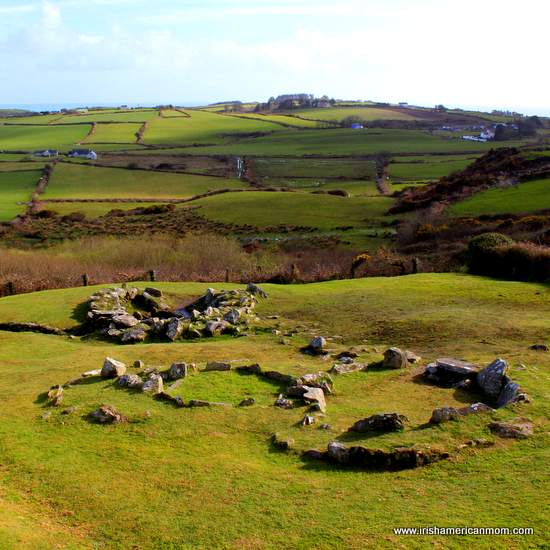
And here's a photo of what remains of the stone huts today. The furthest one in the picture contains the well, the fire pit and the cooking trough.

Here's the well inside the fulacht fiadh..
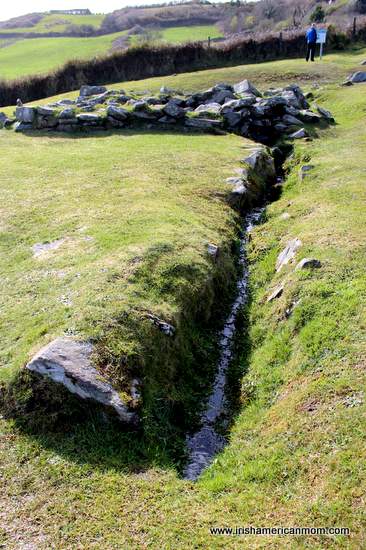
And here's the ancient water drain used to carry excess water out of the hut, and God only knows what else.
And there's my hubby in the blue jacket reading the informational sign like any good tourist should.
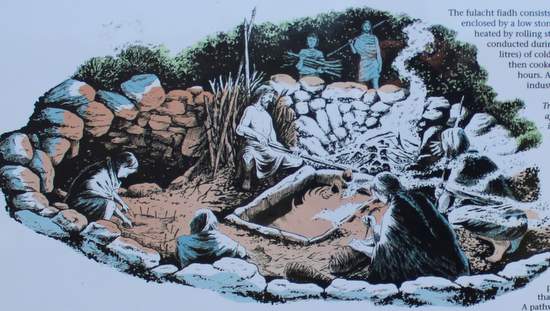
The Office of Public Works has erected some valuable information signs around the site. This sketch illustrates how our ancestors might have lived in the fulacht fiadh.
And as I read (not to be outdone by my studious hubby), all I could think was .....
"I'm so glad they had a fire pit?
Our poor ancestors would have perished
on the side of this blustery hill without a fire."
And as I examined this image, immersing myself in our predecessors way of life, a squalling gust of West Cork wind nearly blew me head long into the sign. I looked at the shirtless, fire stoker and thought ....
"I don't care how much you poke and prod that fire. Go put your wolf skin cloak on, before you catch your death of cold."
Our forebears sure were a hardy crew. No need for a sheltered cave. They braved the cold of a windswept, coastal, Cork hill, huddling together in stone huts around an ever-burning fire.
The Significance Of This Ancient Monument
And so what are my takeaways from this amazing historical spot? Without doubt, it's a pure delight to the eye when the sun shines.
Whether it was a holy place, or a family shrine, or a really badly insulated dwelling place, it was built in perfect marriage with the landscape.
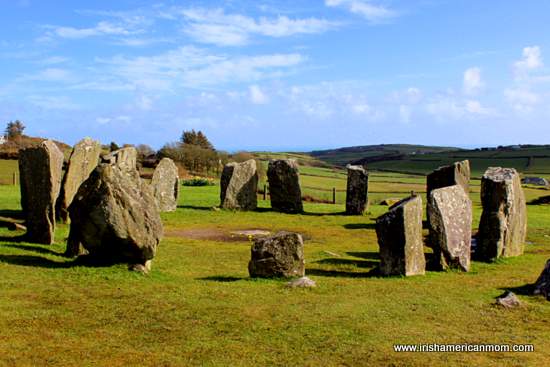
If this open-air temple held great ceremonial importance, it's spectacular setting amidst the green fields, heather, furze and bog of West Cork, make it undeniably mystical and magical.
This sophisticated, astronomically aligned monument was created by our ancestors, who must have been superb mathematicians, even if they worked their sums out without the aid of pencil and paper. Solving mathematical equations with a piece of flint was definitely no easy task, but our forebears were up to the task. And their handiwork stands to this very day.
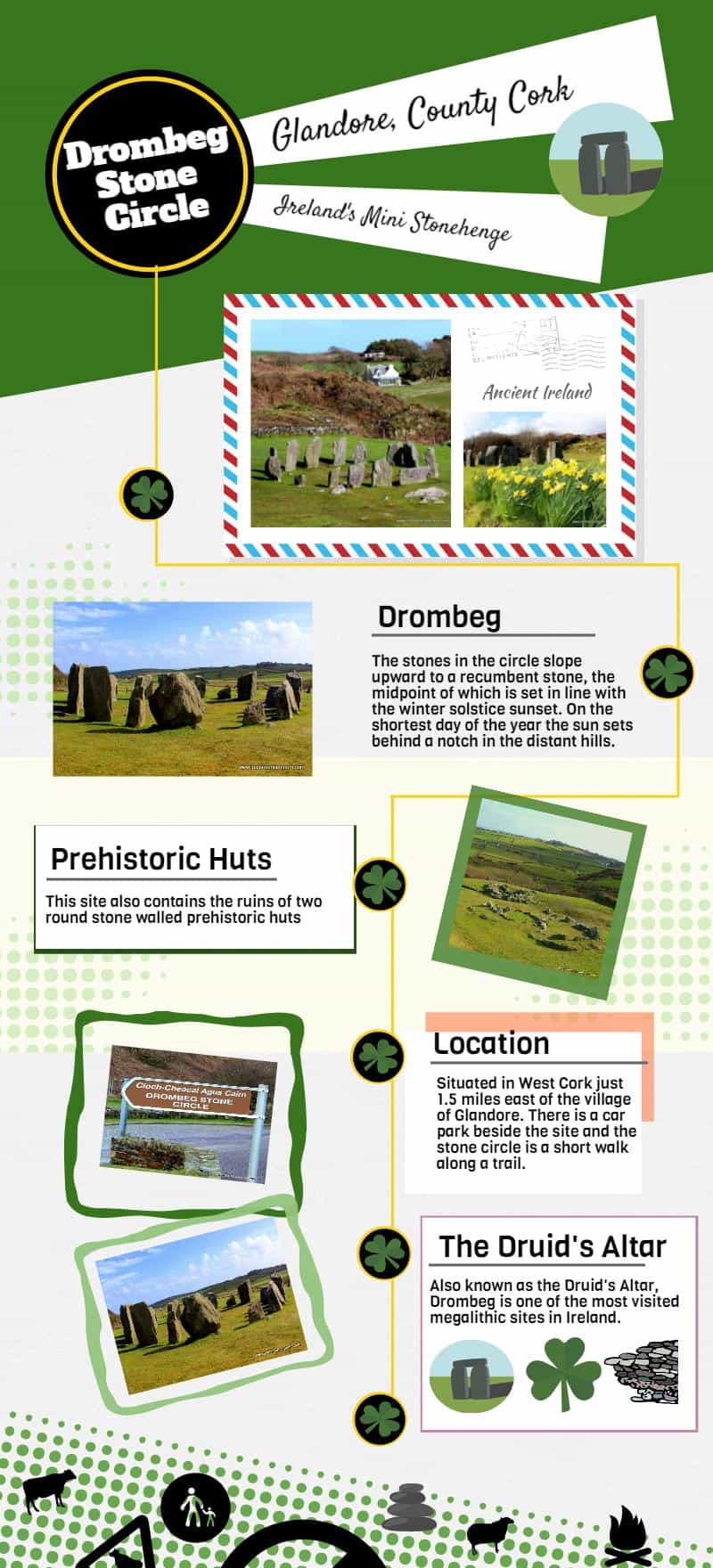
And so as we ponder whether this was a mystical burial site, or a place for star-gazing and ancient divination, I can't help thinking to myself..... what if all the insightful archaeological assumptions and proposals are completely wrong?
What if this was just a a spot where our ancient ancestors got together for a bit of craic as the sun set in the dead of winter.
A good feed from a trough of stew goes a long way on a cold winter's night. So sorry, I just can't help getting carried away with the idea of a trough of stew, and our ancestors' rocky crock pot.
Enough of my rambling. No matter where the truth lies, I think we can all appreciate what a cultural gem this ancient historical spot truly is.
And a big thanks to all for stopping by for this little tour of Ancient Ireland.

Slán agus beannacht,
(Goodbye and blessings)
Mairéad -Irish American Mom
Pronunciation - slawn ah-gus ban-ock-th
Mairéad - rhymes with parade
If you enjoyed this installment, then here are some other ramblings you might enjoy ….
Barley Cove Beach, County Cork
The Rose As A Symbol Of Ireland
Irish Famine Burial Pits in Skibbereen


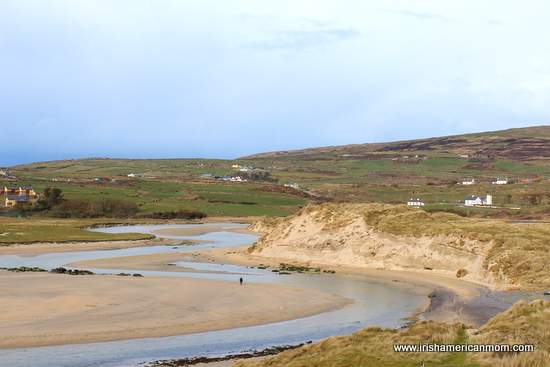
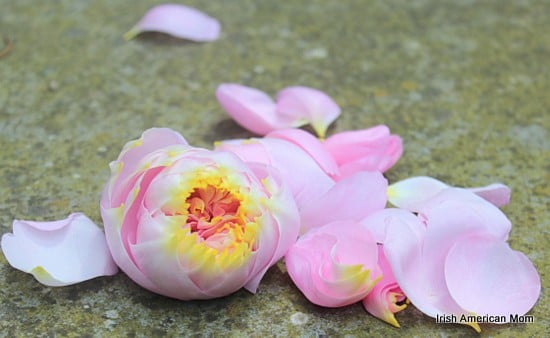













Maury
I love this post! I have always been fascinated with the stone circles! Thanks so much for sharing this!
Irish American Mom
Hi Maury - Stone circles are truly fascinating. We'll probably never learn what their true purpose was, but they are an incredible link to the past.
Best wishes,
Mairéad
Claire Fullerton
Slainte to you, Irish American Mom! Loved the post; love your site and have shared on Twitter!
Irish American Mom
Hi Claire - Thanks so much for sharing this post. I really appreciate your support and I'm so glad you enjoyed this rambling post about Drombeg.
Best wishes,
Mairéad
Melissa Martin Ellis
I always wanted to visit Drombeg...now I feel like I have! So fun and informational! And when I heard of the cooking pit, all I could think of was how much we like to boil things, LOL. I'll be sharing on Facebook.
Irish American Mom
Hi Melissa - The idea of boiling meat in a trough with hot stones made me laugh too. We Irish love to boil everything and it looks like our cooking techniques date back to the dawn of time. Thanks so much for sharing my ramblings, and I'm so glad this post made you feel as if you too visited Drombeg.
Best wishes,
Mairéad
Claudia
Really loved this post! Very interesting and amazing ☺ I didn't know this stone circle, I'm going to visit it on my next trip to Ireland. Thank you for sharing such interesting information !
Irish American Mom
Hi Claudia - I hope you make it to West Cork someday to see some of its amazing archaeological sites. The Beara Peninsula which is a little further west of Glandore, is also well worth a visit if you enjoy history and ancient sites. There are other stone circles and ancient tombs to be found there. I'm delighted you enjoyed this post, and thanks so much for stopping by.
Best wishes,
Mairéad
Kay G.
I loved this post! And you must not make fun of your own theories, you could be just right!
Irish American Mom
Hi Kay - One thing for sure, I'm never short of a few theories. And who knows - the experts may have read a few too many thrillers and be getting carried away with stories of crazy druids. So I'll stick with my trough of stew and a bit of fun theory for these ancient meeting places.
All the best, and thanks for stopping by.
Mairéad
Cheryl Barker
Whatever the purpose behind them, what a glimpse into history, huh? Hope you have a great rest of the week, Mairéad!
Irish American Mom
Hi Cheryl - In Ireland there are reminders of the past everywhere. Sometimes you'll find an old tomb or dolmen, that is over 5000 years old, right in the middle of a field surrounded by cows or sheep.
Hope you have a great week, too.
Mairéad